Nature Near London (Collins Nature Library)
¥147.35
The Collins Nature Library is a new series of classic British nature writing – reissues of long-lost seminal works. The titles have been chosen by one of Britain’s best known and highly acclaimed nature writers, Robert Macfarlane, who has also written new introductions that put these classics into a modern context. Nature Near London is a collection of observational pieces from locations near London at the end of the 19th Century. The depth of knowledge and of familiarity with particular places and particular species gives the impression that each small piece is the product of many years of observation. His style of observation is a work in miniature – cataloguing the most minute details; the dancing of a flower in the wind or the darting of a cautious trout. The chapters centre on a special place, a certain species, geographical feature or habitat – everything from orchards and copses to rivers and streams. Jefferies always explains the typical behaviour of whatever he is describing, and often contrasts what he sees with what one would expect to see in another part of the country, or in a different season. His knowledge of flowers is wide-ranging, and his ability to describe one particular patch of a field in such a specific way brings tremendous variety to the chapters that make up the book. The final chapters are a departure – both from the character of the rest of the book, and from London itself, as Jefferies boards the train to Brighton. Suddenly he is describing people and their relationship to nature, as much as nature itself. The scope widens, less a work in miniature, more surging towards a triumphant end as Jefferies becomes ever more philosophical. 100 years on, the book becomes even more relevant than when it was published – as a reminder of the dangers of unrelenting urbanisation, but also the context of the trend that aims to recreate nature where we need it most – around our cities. Nature near London is a portrait of what we’ve lost, and a reminder of nature’s positive and calming influence. Going along with Jefferies is like taking an afternoon stroll out of the city, without having to leave your armchair.

Bake
¥147.35
Your best friend in the kitchen and bestselling author, Rachel Allen, is back with a collection of delicious and easy cakes and bakes, tarts and pies, quiches and casseroles from her brand new TV series. What could be better than the smell of freshly baked bread or the joy of eating warm cookies straight from the oven? Do you pine for the pleasures of gingerbread houses and holiday delights or the warming goodness of home baked casseroles? These are just some of the treats that await in Bake, which ties in with Rachel’s brand new TV series. She shares both the sweet and the savoury sides of baking, whether quick snacks, wholesome breads and pies, exotic cakes and tarts or easy baked meals for friends and family. Fully illustrated with beautiful food photography including step-by-steps to take the mystery out of traditional baking and pastry making. Rachel also offers troubleshooting techniques for common problems and wheat or gluten-free recipes so nobody is left out of the fun! Rachel’s friendly and expert tuition make this easy-to-use book the best friend to every home baker. Recipes include: ? Cardamon bread ? Crispy bacon and cheddar bread ? Cheese straws and pretzels ? Pork, chorizo and spinach pie ? Beef pasties with mint, ginger and peas ? Baked cheese fondue in a squash ? Seville orange meringue pie ? Cornish saffron bread ? Lime and yoghurt cake with rosewater and pistachios
Dinner’s On!: 100 quick and delicious recipes the whole family will enjoy
¥147.35
‘He’s a regular guy – he’s not a chef and he’s not formally a cook, and he was a virgin in the kitchen … I love his enthusiasm for food, having a laugh and for family, and I think, at the end of the day, that’s what food is about. Viva Virgin Kitchen!’ Jamie Oliver Three years ago Barry Lewis couldn’t boil an egg. Now he’s a rising star of the food world and one of the country’s hottest new cooks. In 2010 Barry taught himself to cook step-by-step, filming the process and posting the videos on his YouTube channel My Virgin Kitchen. The channel became an overnight hit, racking up millions of views and inspiring thousands of new cooks to pick up the ladle. Before long, Barry had attracted media attention and been given the seal of approval by his idol, Jamie Oliver. He’s now a regular on Jamie’s Food Tube Channel. Barry Lewis is all about delicious ingredients, healthy meals and having fun. These recipes are for everyone: young or old, seasoned pros or those who are terrified of setting foot in the kitchen. Whether you’re looking for family favourites like Beef & Ricotta Pasta Shells, heartwarmers like Bangers & Mustard Mash Casserole, or melt-in-your-mouth treats like Vanilla & Honeycomb Semifreddo, here you’ll find all the ingredients, inspiration and confidence you need. So what are you waiting for? Get stuck in, because Dinner’s ON!
You’ll Miss Me When I’m Gone: The life and work of Eric Morecambe
¥147.35
To mark the 25th anniversary of Eric Morecambe’s death, You’ll Miss Me When I’m Gone is the first book to cover Eric’s whole life and untimely death, including unseen family photographs and new insights by Eric’s son Gary Morecambe. Published in the 25th anniversary year of Eric Morecambe’s death, You’ll Miss Me When I’m Gone is a celebration of Eric Morecambe’s life in words and previously unseen personal family photographs. Eric Morecambe and Ernie Wise are to this day still regarded as Britain’s most successful and best loved comedy duo, and their television shows from the 1970’s and 80’s are undoubtedly their finest work. For the first time, Eric Morecambe’s whole life, from his earliest days in his home-town of Morecambe right up to his death in Gloucestershire in 1984 are appraised by his son Gary. Included are photographs not seen by the family until recently – poignantly one of Eric at a friend’s wedding the day before he would collapse and die on stage. As the final and definitive book on Eric Morecambe,You’ll Miss Me features interviews with those who knew and loved Eric, including his wife Joan, Ronnie Corbett, Hamish McColl who wrote and starred in The Play What I Wrote and a foreword by Judi Dench. ’You’ll miss me when I’m gone’ was Eric’s oft repeated plaintive remark when he’d been annoying the Morecambe family with his gags.The irony is that, 25 years after his death, the viewing nation still misses Eric Morecambe.

Eating Well Made Easy:Deliciously healthy recipes for everyone, every day
¥147.35
It’s everyone’s meal-time dilemma: how to cook quick, easy, tasty meals that are also good for you? Bestselling TV chef Lorraine Pascale’s brilliant new book Eating Well Made Easy shows you how. Lorraine is famous for putting together delicious recipes that are simple and easy to make, and now she’s gone one step further: creating tasty dishes that are not only perfect for busy lifestyles, but are nutritious, too. Understanding how important it is now for both families and individuals to eat healthily every day, Lorraine gives you all the inspiration you need to eat well all week long, without compromising on taste. Rustle up surprisingly simple breakfasts and delicious midweek dinners, and impress your guests at the weekend with recipes that are properly balanced, with nothing processed – and still decadently full of the flavour Lorraine is known for. Stunningly presented with beautiful photography throughout, this essential cookbook is Lorraine’s most comprehensive to date, full of delicious, nutritious fare for every meal time – made easy!
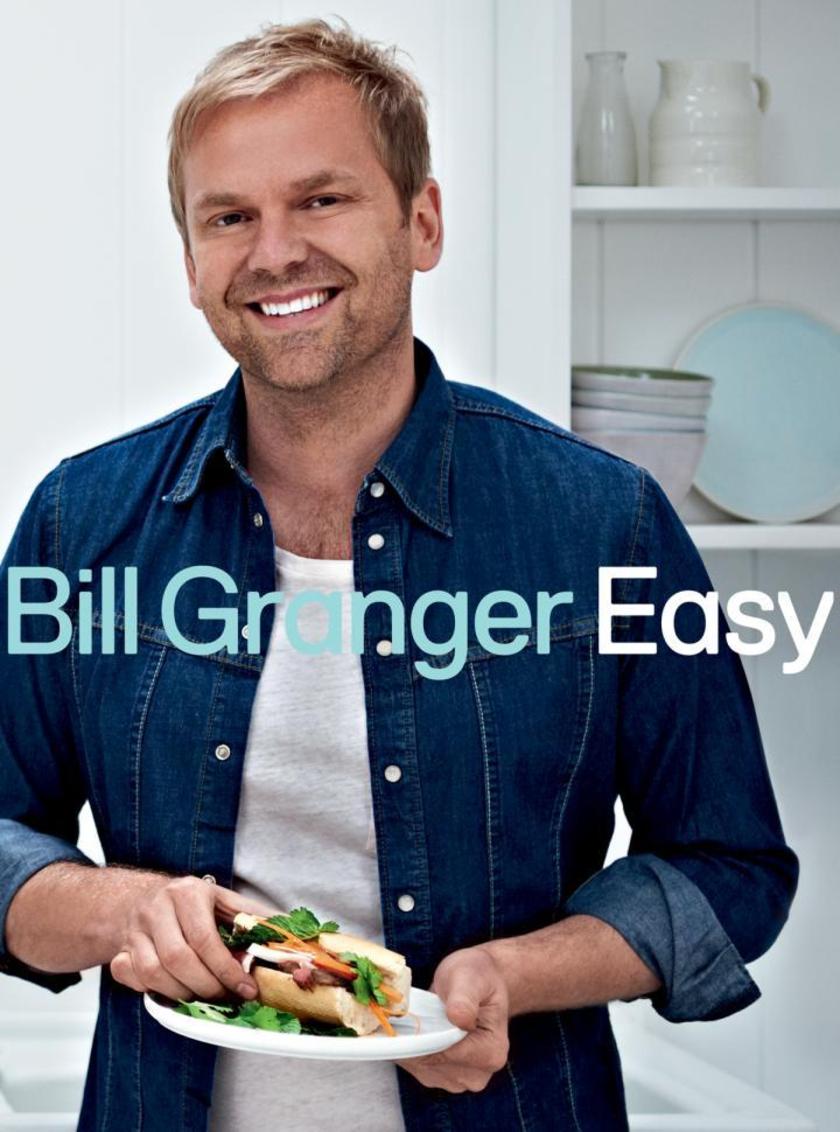
Easy:100 delicious dishes for every day
¥147.35
Simple, laidback food that bursts with flavour; fresh, inspiring recipes using favourite everyday ingredients - no one does fantastic easy cooking like Bill Granger. Simple, laidback food that bursts with flavour; fresh, inspiring recipes using favourite everyday ingredients - no one does fantastic easy cooking like Bill Granger. Bill Granger has long been a champion of no-fuss food. Bill is a restaurateur and self-taught cook, but also a working father who cooks for his family every night. Easy is inspired by years of getting delicious, satisfying meals on the table quickly using everyday ingredients from the fridge or store cupboard, all in Bill’s inimitable easygoing style. In this stunning new cookbook, Bill takes 16 well-loved and accessible main ingredients – from a chicken breast, fillet of fish, cut of lamb or tin of beans to berries, chocolate and a chunk of good cheese – and offers simple yet original dishes. Easy includes 100 delicious recipes, from satisfying meat and fish, to flavour-packed vegetarian dishes and bakes, bold salads and tasty pasta, and finally mouth-wateringly easy sweet things. Great food. Big Flavours. No worries. That’s what Bill is all about. Recipes include: Chilli Garlic Chicken with Sour Cream Mash Tandoori Fish with Cucumber Tomato Salad Goulash with Gnocchi Lamb with Torn Bread and Apricot Stuffing Fennel Roasted Rack of Pork with Maple Syrup Light Butter Chicken Manchego-Crusted Pork with Romesco Sauce Taleggio and Pancetta Baked Pasta Rice Salad with Broad Beans, Asparagus and Smoked Trout Baked Leek and Goats Cheese Risotto and Apple and Celery Salad Potato, Courgette and Mozzarella Fritters Cinnamon Chocolate Mousse Ginger Pear Upside Down Pudding

Gordon Ramsay’s Great British Pub Food
¥147.35
In his outstanding new cookbook, Gordon Ramsay teams up with Mark Sargeant to showcase the best of British cooking. Packed full of sumptuous and hearty traditional recipes, Gordon Ramsay's Great British Pub Food is perfect for relaxed, homely and comforting cooking. Pubs were once a place where you could always guarantee good, simple, cheap food and a great Sunday roast, but when the steak houses and fast food chains arrived the good home cooking from the pub kitchens was replaced with tasteless, defrosted meals. Then came the gastropubs, which weren't much better, serving mediocre food at restaurant prices. That's why when Gordon Ramsay and Mark Sargeant set up the Gordon Ramsay pubs in London they wanted to produce the sort of simple but delicious British classics that warm the cockles of your heart and to serve them at affordable pub prices. Dishes like rich, hearty Chicken and Smoked Bacon Pie, mouth-watering Gloucestershire Sausages with Grainy Mustard Mash and Red Onion Marmalade and indulgent Treacle Tart - classics that have stood the test of time. Now Gordon has gathered his favourite British recipes into one sumptuous collection so you can invite your friends round, serve some good, English ale and cook the best in traditional pub food classics in your own home.

Collins Tracing Your Family History
¥147.35
The new, fully-updated edition of Collins Tracing Your Family History is the definitive handbook for anyone interested in tracing their family’s past. Firmly practical in its approach, yet entertaining in its style, this reference guide is the indispensable companion for all who are seeking a reliable, one-source volume to use while tracking down their family origins. New and up-to-date content helps you make the most of your resources - such as how best to utilise the internet, and informs you about the most recent records released which could be vital to your search for your ancestry. The book gives comprehensive guidance on the full variety of governmental, religious and more obscure records available to the family history sleuth. The guide also contains highly useful advice on how to expand and reinvigorate a search when the trial runs cold – as it inevitably will. Author Anthony Adolph balances detailed instruction and guidance with humorous anecdotes and illuminating history lessons, ensuring an informative and entertaining read.
Good Things To Eat
¥147.35
Simple, delicious, unfussy – Sunday Times resident food writer Lucas Hollweg offers good food for real people. Good Things to Eat is just that: great food that focuses on the ever-popular ingredients and types of recipes that home cooks turn to again and again; the dishes that make everyone go 'yum!' From risottos, stews, gratins and things on toast to lamb, fruit, pasta, pies, squashes and puds, Lucas opens up scrumptious new possibilities for the kinds of flavours people know and love. Lucas weaves together his recipes with personal memories, inspiration, gentle advice and the odd joke. His warm, unhurried writing and layman's understanding of what needs explaining and what doesn't, plus his usage of ingredients that people can easily get hold of, ensure he will inspire everyone to make uncomplicated, tasty food – no matter how practised they are in the kitchen. At long last, here is the book his fans have been waiting for. Recipes include: Sea bream with fennel and orange Chicken schnitzel with lemon and thyme Aubergine, courgette and basil gratin Cod with lentils, rocket and salsa verde A bowl of roast quails with spiced yogurt Spiced rack of lamb with butterbean mash Peach, prosciutto and mozzarella salad Veal chops with Roquefort and thyme butter Pot-roast chicken and chicory Beef stew with cinnamon and prunes Raspberry and mint sorbet Autumn mess with blackberries Banana and black pepper tarte tatin A go-with-anything cake (and things to go with it) The 123 cocktail
Feasts From the Middle East
¥147.35
Tony Kitous arrived in London for the first time on August 6, 1988, aged 18, he spent his 1st night sleeping in Victoria coach station and spent the next fortnight living off chocolate. The self-styled Algerian “street boy” had just ?70 in his pocket and was meant to be on a holiday with a school friend. More than 29 years later, the now hugely successful owner of the Comptoir Libanais canteen and delicatessen chain has 24 branches in and London and around the UK, employing around 1000 staff. They are part of an empire which also encompasses three Shawa - Lebanese grill outlets, as well as prestige restaurants such as Levant on Wigmore Street and Kenza in the city of London.

Marcus at Home
¥147.35
MARCUS WAREING is one of the most respected and acclaimed chefs and restaurateurs in Britain today. Originally from Southport, Merseyside, Marcus began his career at the age of 16. An incredible talent, he started acquiring Michelin stars aged just 26 – one of only a handful of chefs to be recognised at such a young age. Over the last 30 years Marcus has been involved in the creation of many of London’s most iconic and celebrated restaurants, including his own restaurant group, Marcus Wareing Restaurants, which he founded in 2008. With two Michelin stars at his flagship restaurant, Marcus, in the Berkeley Hotel, he also owns and operates two other London restaurants, The Gilbert Scott and Tredwell’s.Alongside his Michelin stars, Marcus has also won numerous coveted awards. These include the Acorn Award, Chef of the Year with Caterer and Hotelkeeper, Tatler Restaurateur of the Year and GQ Chef of the Year. A familiar face on our TV screens, Marcus took on the new role as judge on MasterChef:The Professionals in 2014. Marcus lives in London with his wife and three children.

Citizen Reporters:S.S. McClure, Ida Tarbell, and the Magazine That That Rewrote
¥160.56
A fascinating history of the rise and fall of influential Gilded Age magazine McClure’s and the two unlikely outsiders at its helm—as well as a timely, full-throated defense of investigative journalism in AmericaThe president of the United States made headlines around the world when he publicly attacked the press, denouncing reporters who threatened his reputation as “muckrakers” and “forces for evil.” The year was 1906, the president was Theodore Roosevelt—and the publication that provoked his fury was McClure’s magazine.One of the most influential magazines in American history, McClure’s drew over 400,000 readers and published the groundbreaking stories that defined the Gilded Age, including the investigation of Standard Oil that toppled the Rockefeller monopoly. Driving this revolutionary publication were two improbable newcomers united by single-minded ambition. S. S. McClure was an Irish immigrant, who, despite bouts of mania, overthrew his impoverished upbringing and bent the New York media world to his will. His steadying hand and star reporter was Ida Tarbell, a woman who defied gender expectations and became a notoriously fearless journalist.The scrappy, bold McClure's group—Tarbell, McClure, and their reporters Ray Stannard Baker and Lincoln Steffens—cemented investigative journalism’s crucial role in democracy. From reporting on labor unrest and lynching, to their exposés of municipal corruption, their reporting brought their readers face to face with a nation mired in dysfunction. They also introduced Americans to the voices of Willa Cather, Arthur Conan Doyle, Robert Louis Stevenson, Joseph Conrad, and many others. Tracing McClure’s from its meteoric rise to its spectacularly swift and dramatic combustion, Citizen Reporters is a thrillingly told, deeply researched biography of a powerhouse magazine that forever changed American life. It’s also a timely case study that demonstrates the crucial importance of journalists who are unafraid to speak truth to power.

Children of the Land
¥160.56
An Entertainment Weekly, The Millions, and LitHub Most Anticipated Book of 2020This unforgettable memoir from a prize-winning poet about growing up undocumented in the United States recounts the sorrows and joys of a family torn apart by draconian policies and chronicles one young man’s attempt to build a future in a nation that denies his existence. “You were not a ghost even though an entire country was scared of you. No one in this story was a ghost. This was not a story.”When Marcelo Hernandez Castillo was five years old and his family was preparing to cross the border between Mexico and the United States, he suffered temporary, stress-induced blindness. Castillo regained his vision, but quickly understood that he had to move into a threshold of invisibility before settling in California with his parents and siblings. Thus began a new life of hiding in plain sight and of paying extraordinarily careful attention at all times for fear of being truly seen. Before Castillo was one of the most celebrated poets of a generation, he was a boy who perfected his English in the hopes that he might never seem extraordinary. With beauty, grace, and honesty, Castillo recounts his and his family’s encounters with a system that treats them as criminals for seeking safe, ordinary lives. He writes of the Sunday afternoon when he opened the door to an ICE officer who had one hand on his holster, of the hours he spent making a fake social security card so that he could work to support his family, of his father’s deportation and the decade that he spent waiting to return to his wife and children only to be denied reentry, and of his mother’s heartbreaking decision to leave her children and grandchildren so that she could be reunited with her estranged husband and retire from a life of hard labor. Children of the Land distills the trauma of displacement, illuminates the human lives behind the headlines and serves as a stunning meditation on what it means to be a man and a citizen.
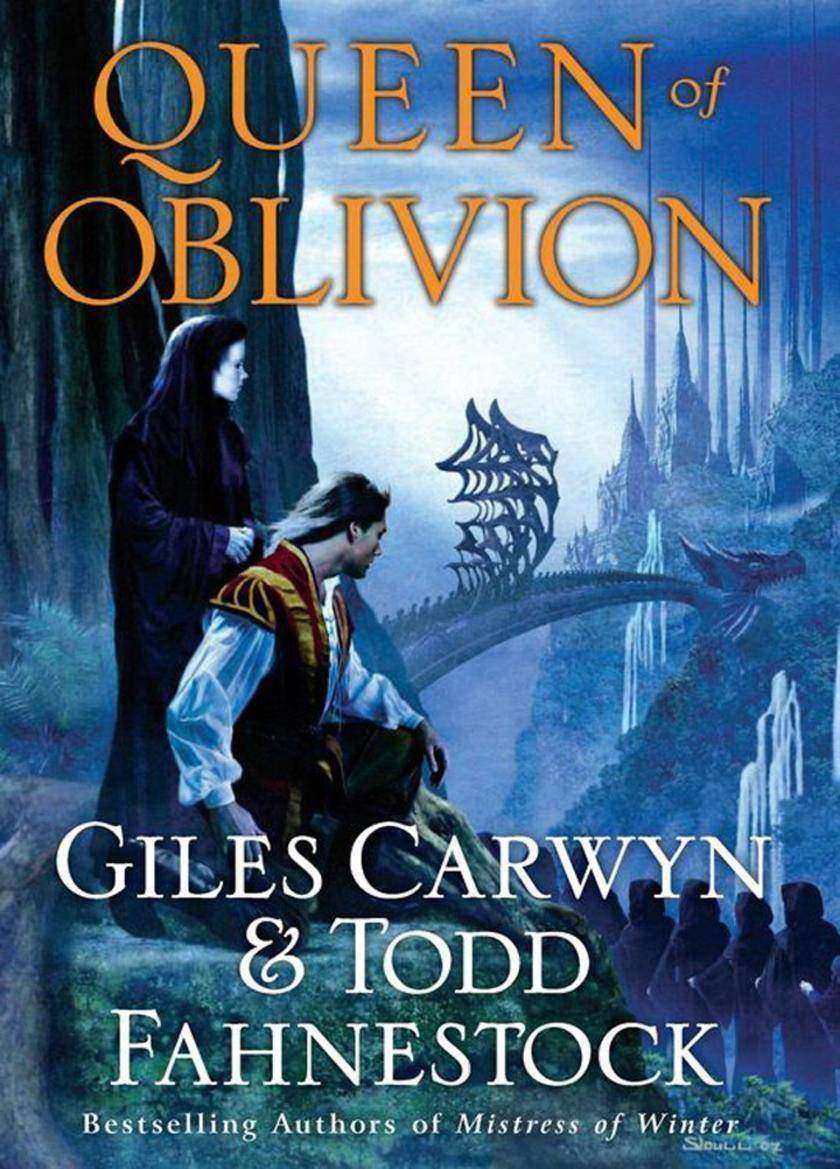
Queen of Oblivion
¥147.25
Journey beyond Ohndarien to the fallen city of Efften in the stunning conclusion to the epic Heartstone TrilogyA fallen hero defies his destiny . . . A scarred sorceress fights for love . . . A vindictive lover clings to hope . . .And a father of lies calls his family home . . ."You must teach a lost child how to love." With his dying words, the Opal Emperor leaves Brophy, the Heir of Autumn, with an impossible choice: betray his heart by seducing the enchantress Arefaine Morgeon, or watch her ruthless ambitions destroy the world.As Brophy fights to stop Arefaine from unleashing the ancient menace trapped within the silver towers of Efften, the sorceress-concubine Shara returns to her beloved city of Ohndarien to find its people enslaved by the same sinister voice leading Arefaine to her doom. Shara and Brophy rush to bring the truth to Arefaine before the horrors of Efften are reborn, but the darkness within their own hearts may prove the greatest threat . . .
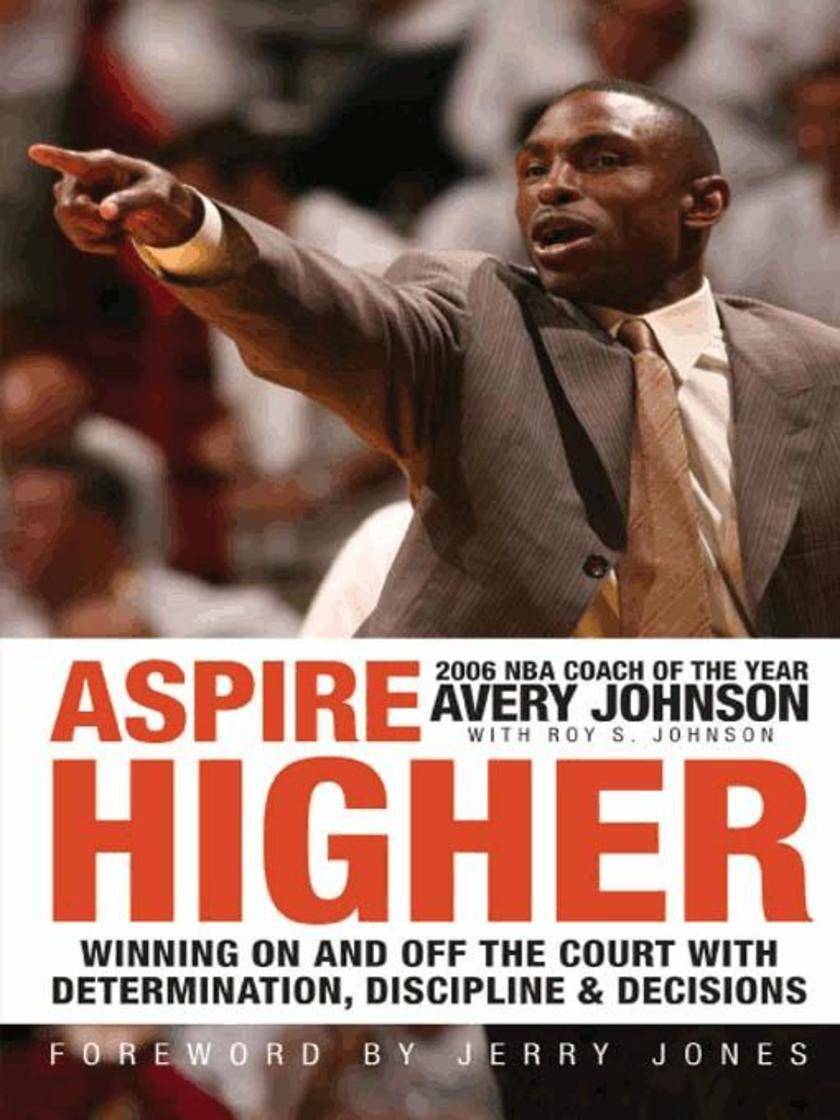
HarperCollins e-books
¥147.25
Avery Johnson is a coach, a teacher, and sometimes even a preacher, but most of all, he is a motivator, driving his team with the same fiery passion that allowed him to earn his championship credentials as an NBA player. Growing up in New Orleans's Lafitte Housing Project, he was never the biggest, fastest, or strongest, but by the strength of his will and character, he persevered. Now he offers the lessons he learned on his journey from the bottom of the bayou to the heights of success in this inspiring book. Aspire Higher is the essential game plan for reaching your goals. Johnson begins by outlining what it takes to get to the top: determination and discipline provide the foundation that allows you to make the right decisions, on the basketball court or in the boardroom. The goal isn't just to be successful, however; it's also about caring for other people along the way. I care about you more than I care about winning, Johnson often tells his players.Avery Johnson's personal and professional experiences illuminate crucial lessons, inspiring readers just as he has inspired teammates and players. His spirited message is for anyone looking for the tools and secrets of success in business, school, sports, and more anyone looking to aspire higher.

HarperCollins e-books
¥147.25
George Washington wrote an astonishing number of letters, both personal and professional. The majority about 140,000 documents are from his years as commander in chief during the Revolutionary War, from 1775 to 1783. This Glorious Struggle presents a selection of Washington's most important and interesting letters from that time, including many that have never been published.Washington's lively and often surprisingly candid notes to his wife and family, friends, Congress, fellow soldiers and even the enemy chronicle his most critical tactical and strategic decisions, while offering a rare glimpse of the extremes of depression and exultation into which he was cast by the fortunes of war. The letters are arranged chronologically and give a dramatic sense of the major phases of the war, from Boston, Trenton, and Valley Forge, to Monmouth and Yorktown. The more personal missives show us a Washington who worried about his wife's well-being and who appreciated a good joke and a well-laid table, not to mention the company of the ladies.This Glorious Struggle brings Washington to vivid life, offering a fresh and intimate sense of this most towering American figure and the critical role he played in the creation of our country.
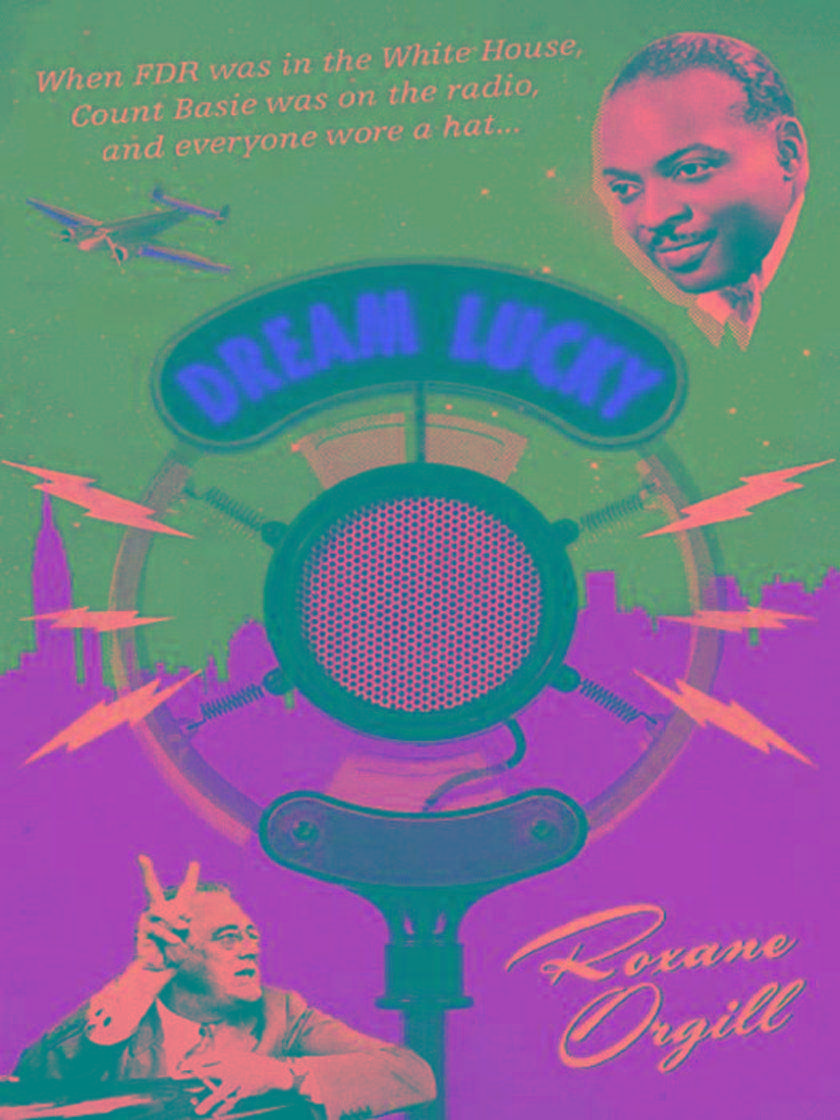
HarperCollins e-books
¥147.25
The time: 1936-1938. The mood: Hopeful. It wasn't wartime, not yet. The music: The incomparable Count Basie and Benny Goodman, among others. The setting: Living rooms across America and, most of all, New York City.Dream Lucky covers politics, race, religion, arts, and sports, but the central focus is the period's soundtrack specifically big band jazz and the big-hearted piano player William "Count" Basie. His ascent is the narrative thread of the book how he made it and what made his music different from the rest. But many other stories weave in and out: Amelia Earhart pursues her dream of flying "around the world at its waistline." Adam Clayton Powell, Jr., stages a boycott on 125th Street. And Mae West shocks radio listeners as a naked Eve tempting the snake.Critic Nat Hentoff praises the "precise originality" with which Roxane Orgill writes about music. In Dream Lucky, she magically lets readers hear the past.

Narration
¥147.15
Newly famous in the wake of the publication of her groundbreaking Autobiography of Alice B. Toklas, Gertrude Stein delivered her Narration lectures to packed audiences at the University of Chicago in 1935. Stein had not been back to her home country since departing for France in 1903, and her remarks reflect on the changes in American culture after thirty years abroad.In Stein's trademark experimental prose, Narration reveals the legendary writer's thoughts about the energy and mobility of the American people, the effect of modernism on literary form, the nature of history and its recording, and the inventiveness of the English language-in particular, its American variant. Stein also discusses her ambivalence toward her own literary fame as well as the destabilizing effect that notoriety had on her daily life. Restored to print for a new generation of readers to discover, these vital lectures will delight students and scholars of modernism and twentieth-century literature."e;Narration is a treasure waiting to be rediscovered and to be pirated by jolly marauders of sparkling texts."e;-Catharine Stimpson, NYU

Scientific Babel
¥147.15
English is the language of science today. No matter which languages you know, if you want your work seen, studied, and cited, you need to publish in English. But that hasn't always been the case. Though there was a time when Latin dominated the field, for centuries science has been a polyglot enterprise, conducted in a number of languages whose importance waxed and waned over time-until the rise of English in the twentieth century.?So how did we get from there to hereHow did French, German, Latin, Russian, and even Esperanto give way to EnglishAnd what can we reconstruct of the experience of doing science in the polyglot pastWith Scientific Babel, Michael D. Gordin resurrects that lost world, in part through an ingenious mechanism: the pages of his highly readable narrative account teem with footnotes-not offering background information, but presenting quoted material in its original language. The result is stunning: as we read about the rise and fall of languages, driven by politics, war, economics, and institutions, we actually see it happen in the ever-changing web of multilingual examples. The history of science, and of English as its dominant language, comes to life, and brings with it a new understanding not only of the frictions generated by a scientific community that spoke in many often mutually unintelligible voices, but also of the possibilities of the polyglot, and the losses that the dominance of English entails.?Few historians of science write as well as Gordin, and Scientific Babel reveals his incredible command of the literature, language, and intellectual essence of science past and present. No reader who takes this linguistic journey with him will be disappointed.
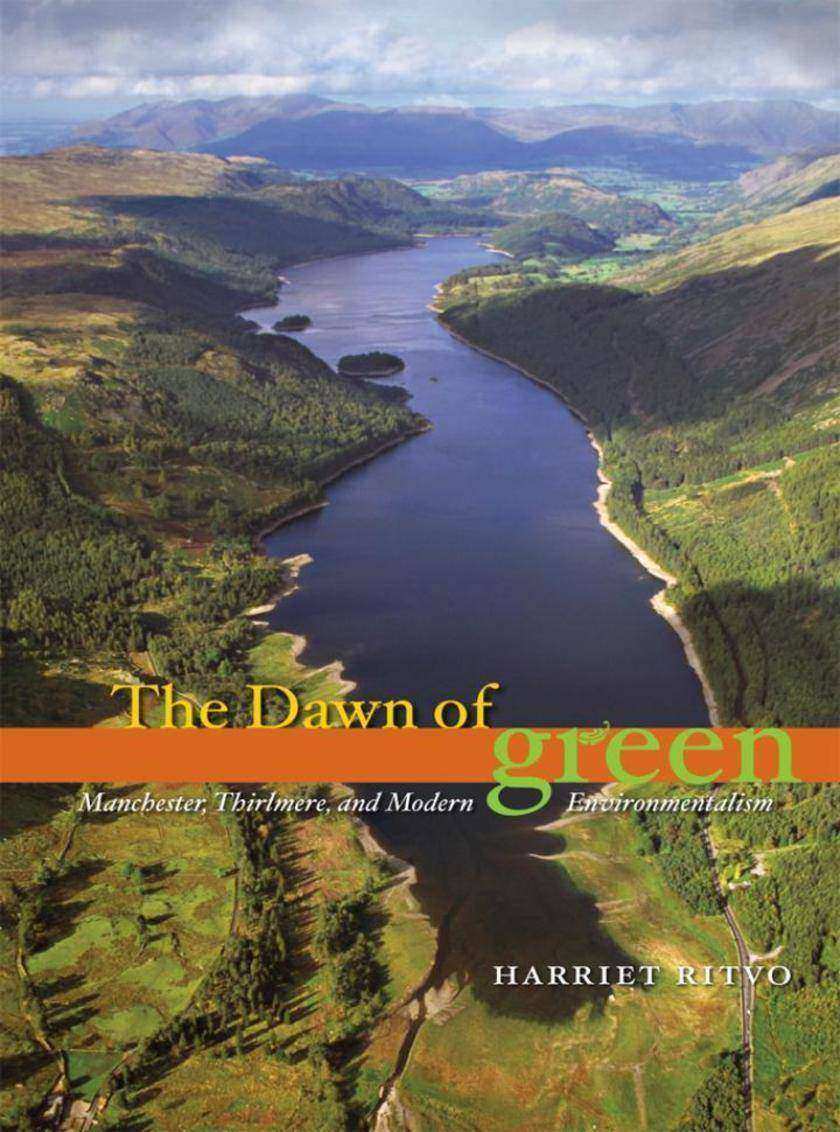
Dawn of Green
¥147.15
Located in the heart of England's Lake District, the placid waters of Thirlmere seem to be the embodiment of pastoral beauty. But under their calm surface lurks the legacy of a nineteenth-century conflict that pitted industrial progress against natural conservation-and helped launch the environmental movement as we know it. Purchased by the city of Manchester in the 1870s, Thirlmere was dammed and converted into a reservoir, its water piped one hundred miles south to the burgeoning industrial city and its workforce. This feat of civil engineering-and of natural resource diversion-inspired one of the first environmental struggles of modern times. The Dawn of Green re-creates the battle for Thirlmere and the clashes between conservationists who wished to preserve the lake and developers eager to supply the needs of a growing urban population. Bringing to vivid life the colorful and strong-minded characters who populated both sides of the debate, noted historian Harriet Ritvo revisits notions of the natural promulgated by romantic poets, recreationists, resource managers, and industrial developers to establish Thirlmere as the template for subsequent-and continuing-environmental struggles.
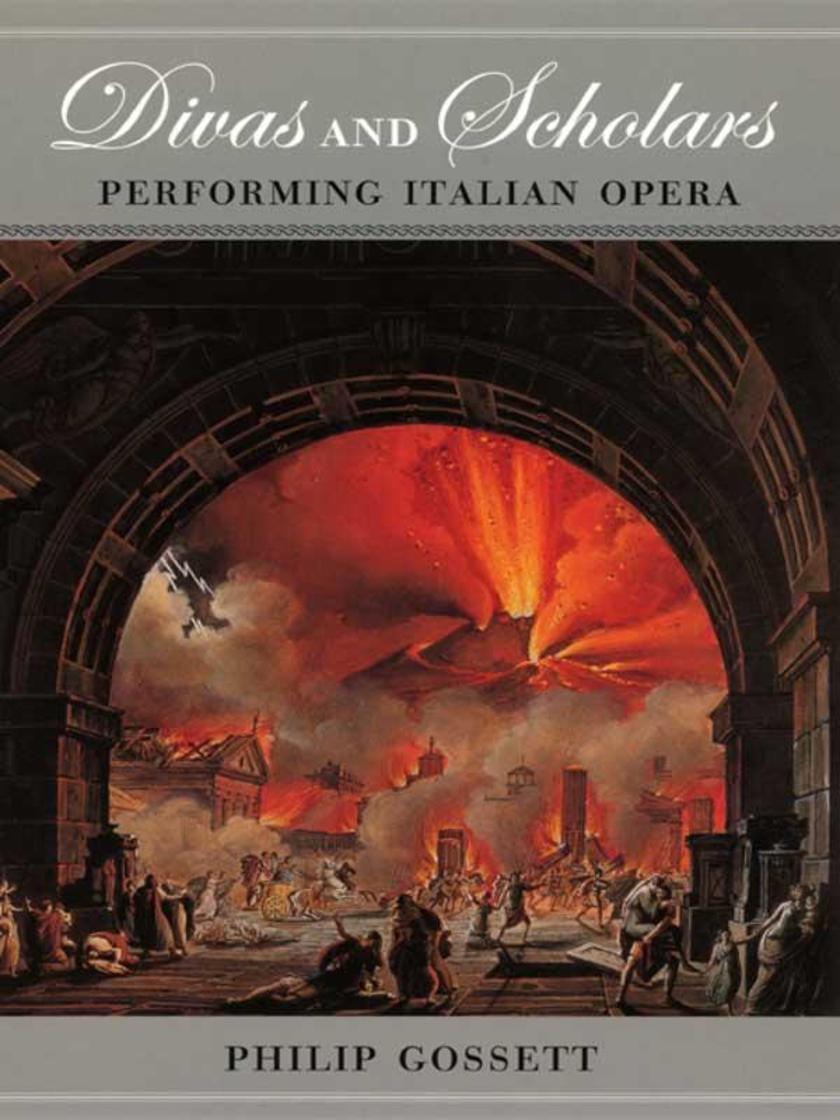
Divas and Scholars
¥147.15
Winner of the 2007 Otto Kinkeldey Award from the American Musicological Society and the 2007 Deems Taylor Award from the American Society of Composers, Authors, and Publishers.Divas and Scholars is a dazzling and beguiling account of how opera comes to the stage, filled with Philip Gossett's personal experiences of triumphant-and even failed-performances and suffused with his towering and tonic passion for music. Writing as a fan, a musician, and a scholar, Gossett, the world's?leading authority on the performance of Italian opera, brings colorfully to life the problems, and occasionally the scandals, that attend the production of some of our most favorite operas.?Gossett begins by tracing the social history of nineteenth-century Italian theaters in order to explain the nature of the musical scores from which performers have long worked. He then illuminates the often hidden but crucial negotiations opera scholars and opera conductors and performers: What does it mean to talk about performing from a critical editionHow does one determine what music to perform when multiple versions of an opera existWhat are the implications of omitting passages from an opera in a performanceIn addition to vexing questions such as these, Gossett also tackles issues of ornamentation and transposition in vocal style, the matters of translation and adaptation, and even aspects of stage direction and set design.?Throughout this extensive and passionate work, Gossett enlivens his history with reports from his own experiences with major opera companies at venues ranging from the Metropolitan and Santa Fe operas to the Rossini Opera Festival at Pesaro. The result is a book that will enthrall both aficionados of Italian opera and newcomers seeking a reliable introduction to it-in all its incomparable grandeur and timeless allure.?




 购物车
购物车 个人中心
个人中心



